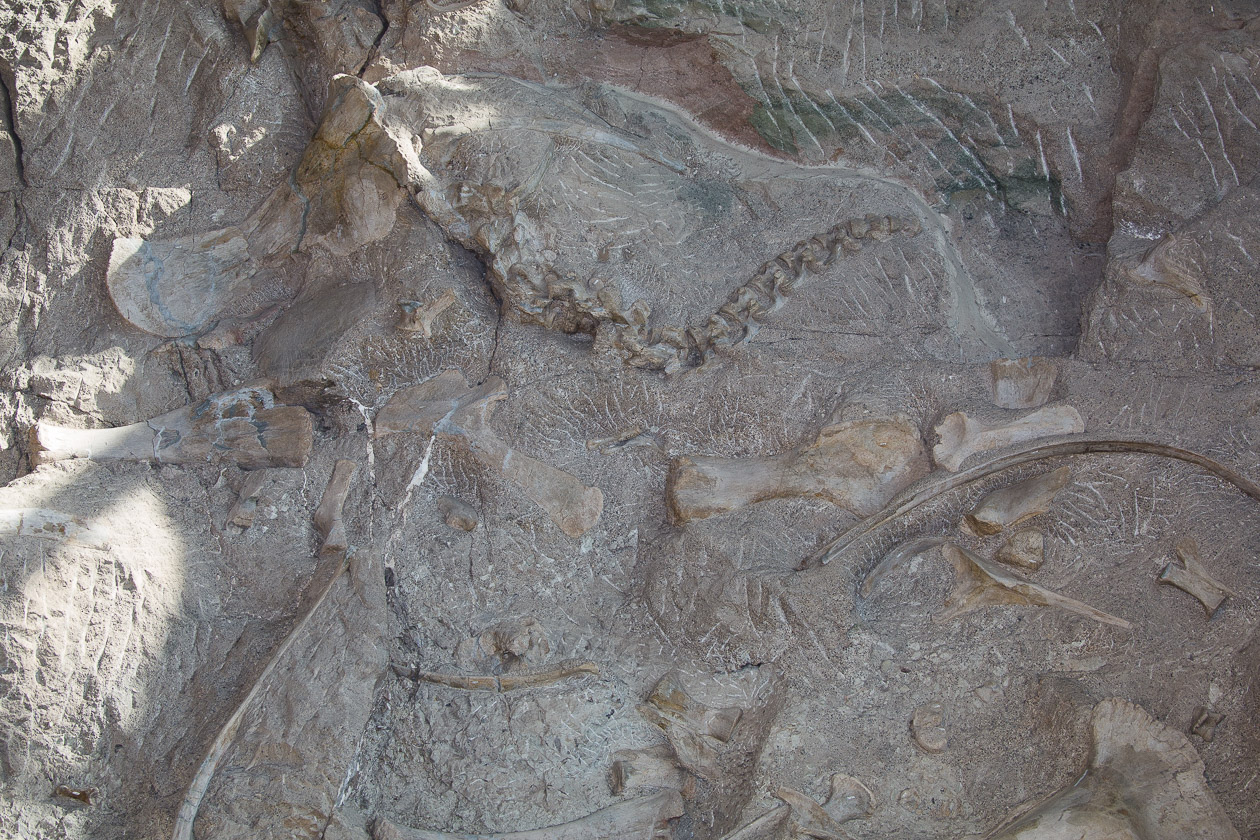
Dinosaur National Monument
Dinosaur National Monument is famous for its remarkable dinosaur quarry. Today, visitors have the opportunity to see the bones in-situ, which means that bones have been carefully exposed but left in the ground as they were found. However, in the early 1900s, the quarry was very active and many dinosaurs were removed, studied, and put on display. Even a century later, paleontologists come to Dinosaur to study and discover more information about dinosaurs and small animals that lived with them.
From the mighty sauropod (long necked dinosaur) to the fragments of the tiniest lizard bones, Dinosaur National Monument is full of fossil treasures that are both beautiful and scientifically fascinating.
Abydosaurus is the most recently discovered dinosaur at Dinosaur National Monument. Allsaurus, meaning "different delicate reptile," is a theropod (meat-eating dinosaur) that probably ate other smaller dinosaurs. Allosaurus jimmadseni is the second species of Allosaurus found at Dinosaur National Monument. Apatosaurus grew up to 69 ft long and ate plants. You may have also heard it referred to by its scientifically incorrect name, Brontosaurus. Barosaurus is a plant eater and the least common of all the sauropods (long-necked dinosaurs) found in the Carnegie Quarry. Camarasaurus is one of the most common sauropods (long-necked dinosaurs) of the Jurassic. Camptosaurus is a two-legged plant eating dinosaur. Diplodocus is one of the most abundant sauropods (long-necked dinosaurs) in the Morrison Formation. Dryosaurus means "oak lizard" in reference to the leaf shaped teeth. Stegosaurus is a plant eating dinosaur with plates on its back and spikes on its tail.
Reptiles
Dinochelys may have lived a life similar to that of modern river and pond turtles. Glyptops probably lived a life similar to that of modern turtles. Hoplosuchus is a long-limbed, running, terrestrial crocodile. Opisthias rarus is a lizard-like reptile known as a sphenodont that reached a length of a foot or more. Paramacellodus is a small lizard with short, blunt teeth.
Mollusks
These freshwater clams are the the most abundant organism preserved in the Carnegie Quarry. Mammals Though it was the size rat, this Jurassic mammal was not a rodent.
Amphibians
The name of this Jurrasic Salamander means "rainbow newt" since it was found in the Rainbow Park area of Dinosaur National Monument. This small Jurassic frog with a body length of about half an inch has only been found at Dinosaur.




















